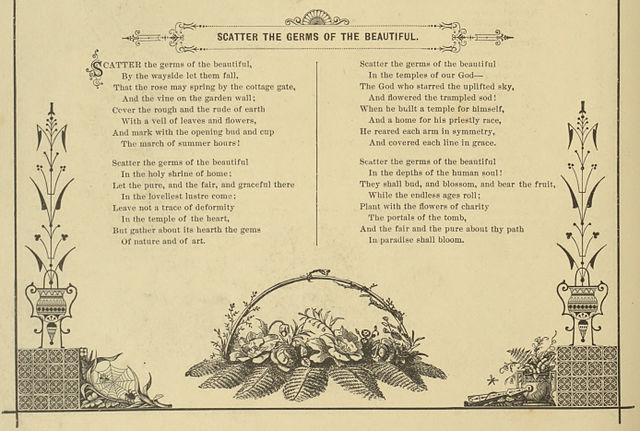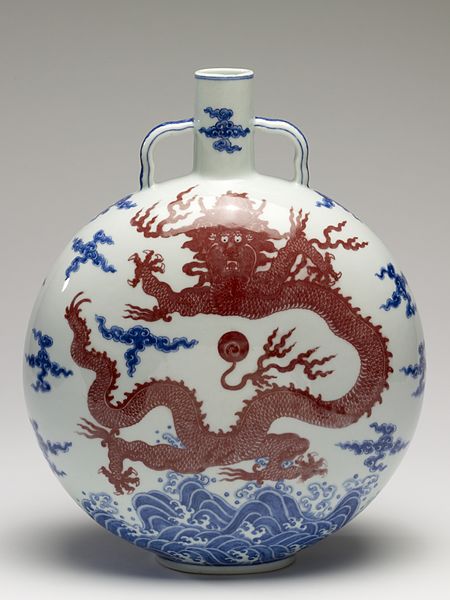In typography, a dingbat is an ornament, specifically, a glyph used in typesetting, often employed to create box frames, or as a dinkus. Some of the dingbat symbols have been used as signature marks or used in bookbinding to order sections.
Poem typeset with generous use of decorative dingbats around the edges (1880s). Dingbats are not part of the text.
In architecture and decorative art, ornament is decoration used to embellish parts of a building or object. Large figurative elements such as monumental sculpture and their equivalents in decorative art are excluded from the term; most ornaments do not include human figures, and if present they are small compared to the overall scale. Architectural ornament can be carved from stone, wood or precious metals, formed with plaster or clay, or painted or impressed onto a surface as applied ornament; in other applied arts the main material of the object, or a different one such as paint or vitreous enamel may be used.
Rococo interior of the Wilhering Abbey (Wilhering, Austria), with a trompe-l'œil painted ceiling, surrounded by highly decorated stucco
Chinese flask decorated with a dragon, clouds and some waves, an example of Jingdezhen porcelain
Khmer lintel in Preah Ko, (east of Angkor, Cambodia) style, late 9th century, reminiscent of later European scrollwork styles
18th-century Rococo balcony, Bavaria. The form is itself ornamental, and further decorated in painted plasterwork





